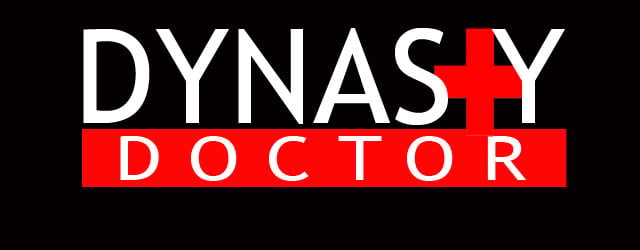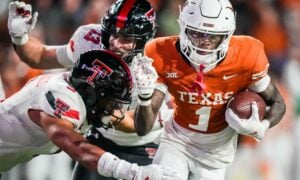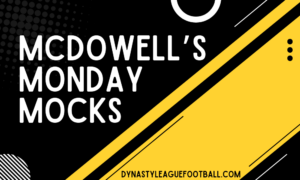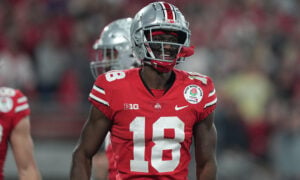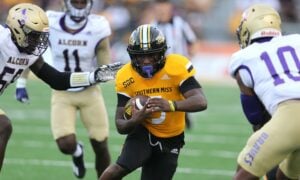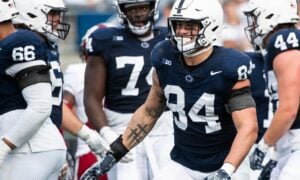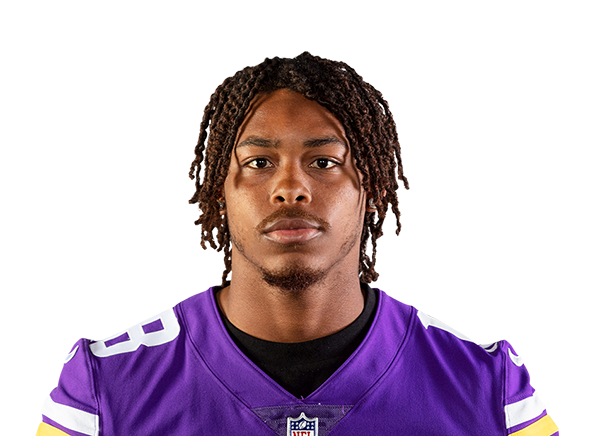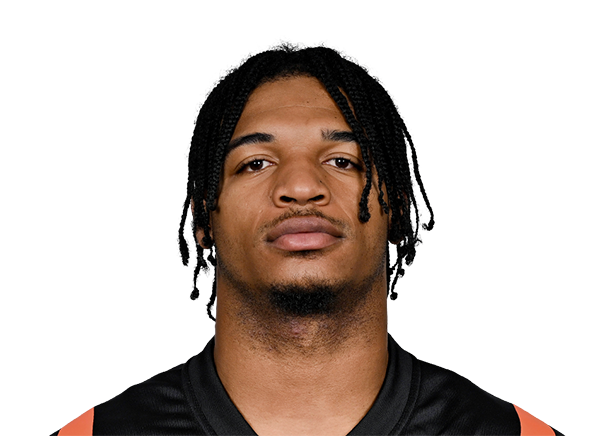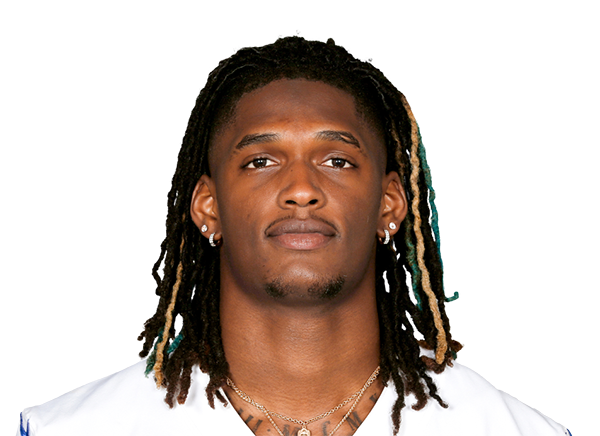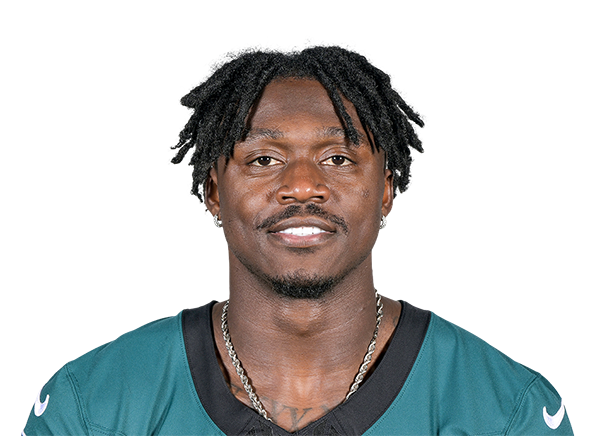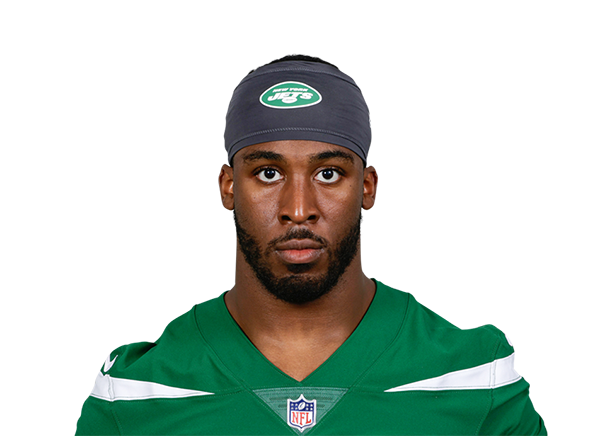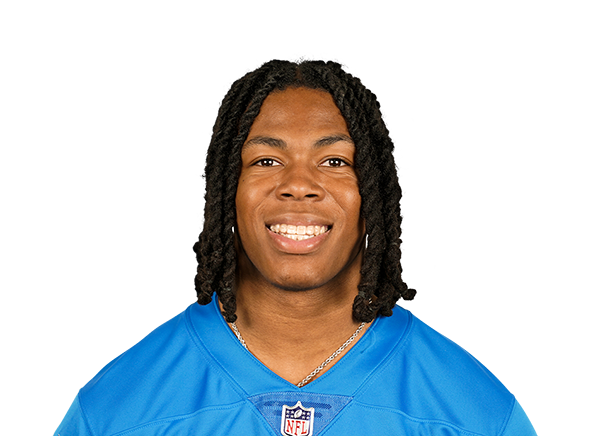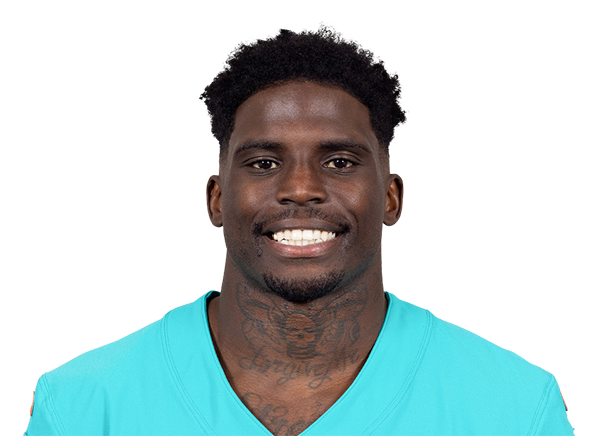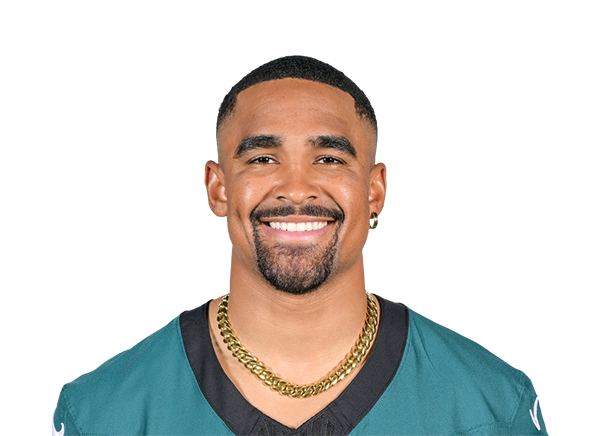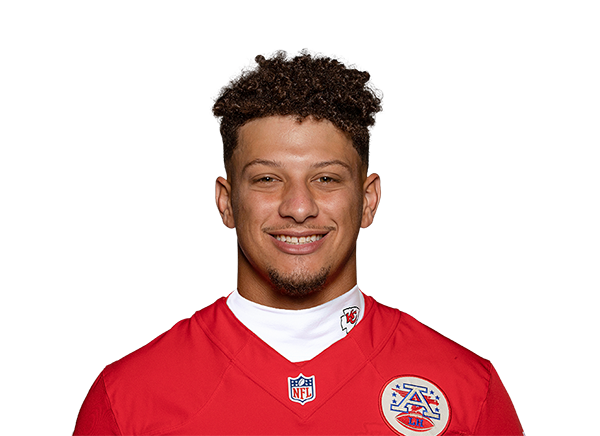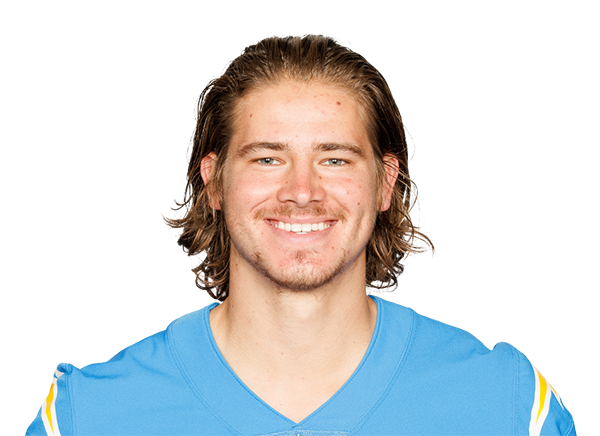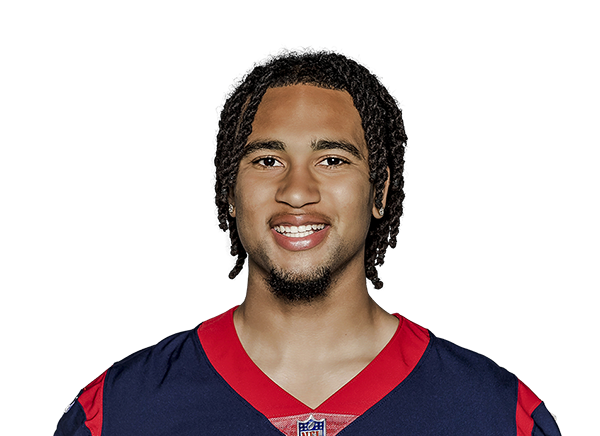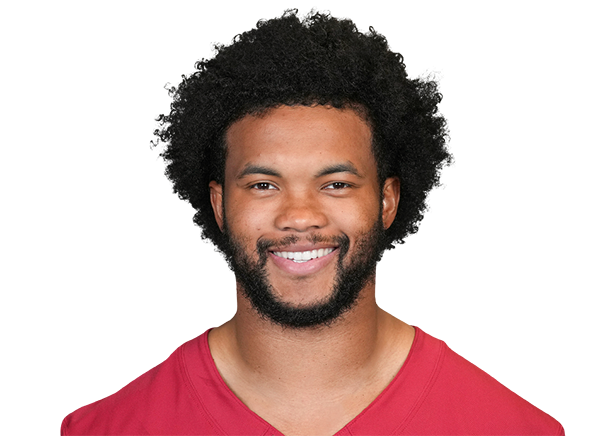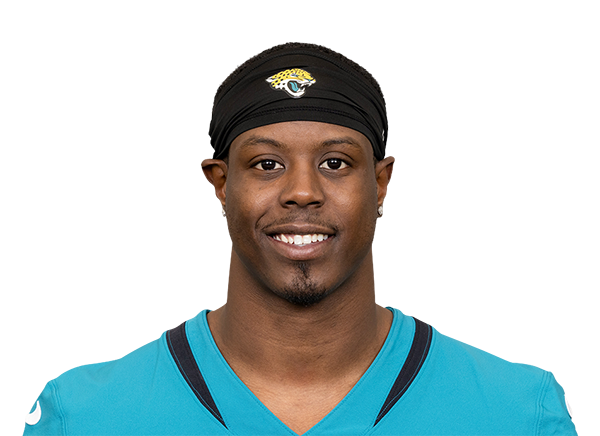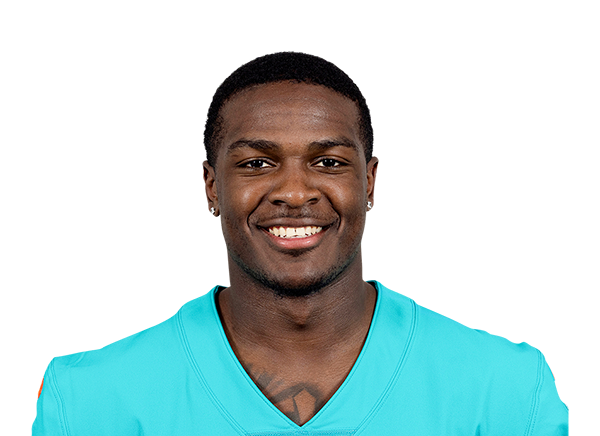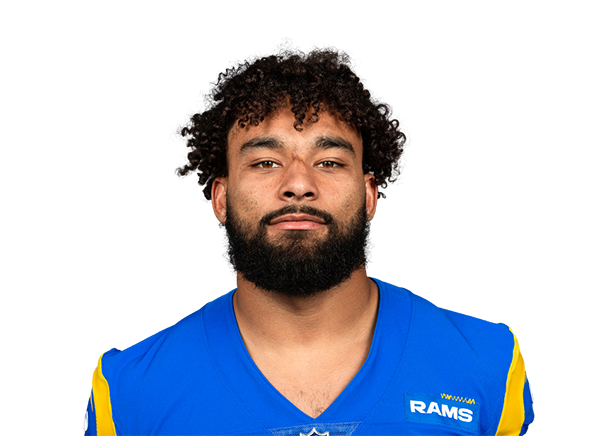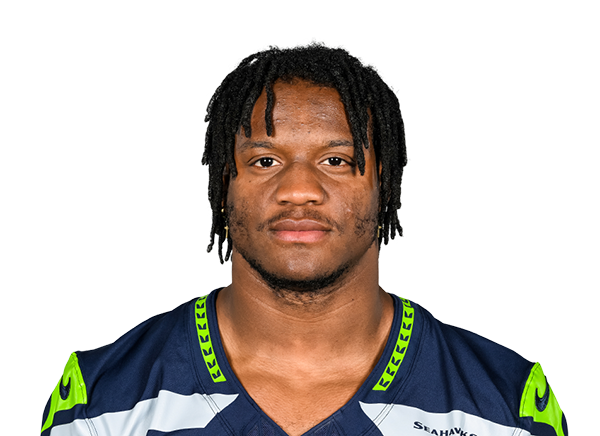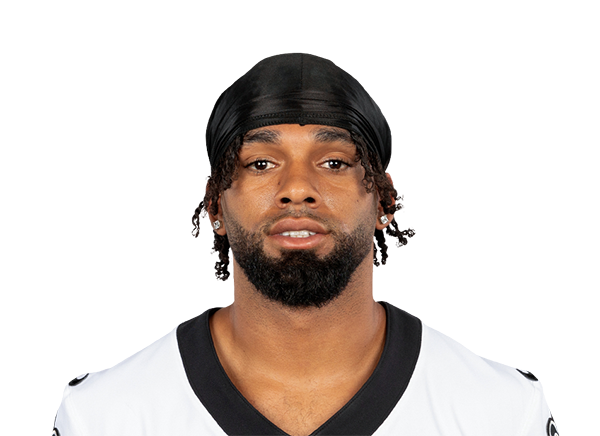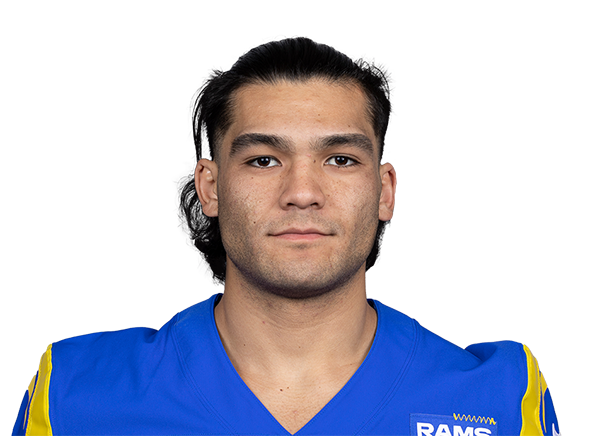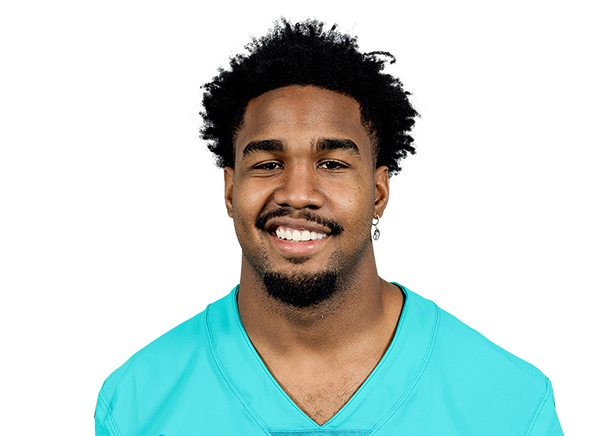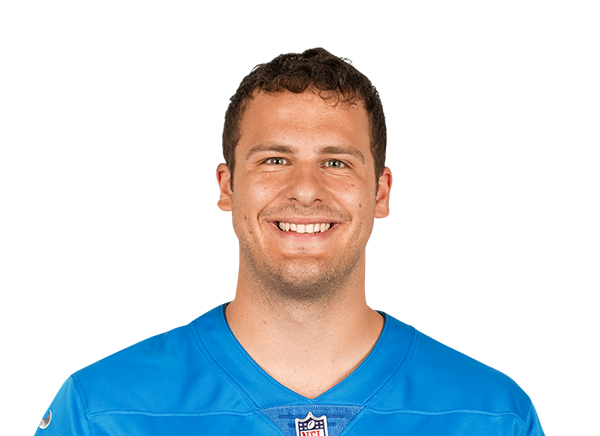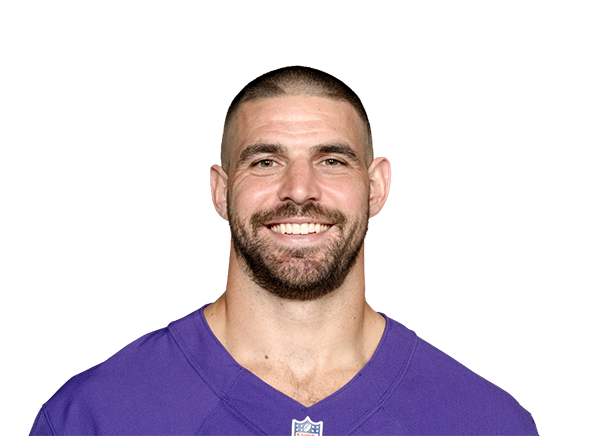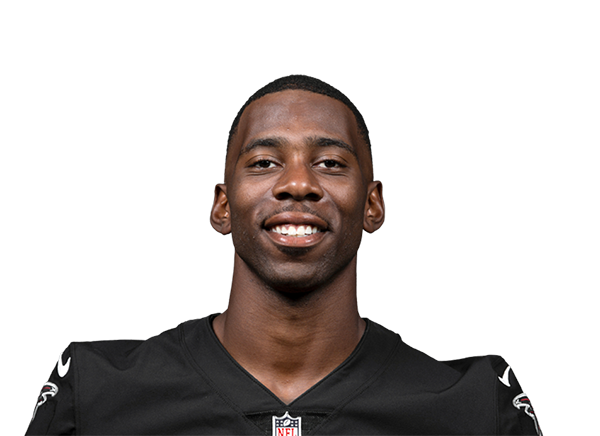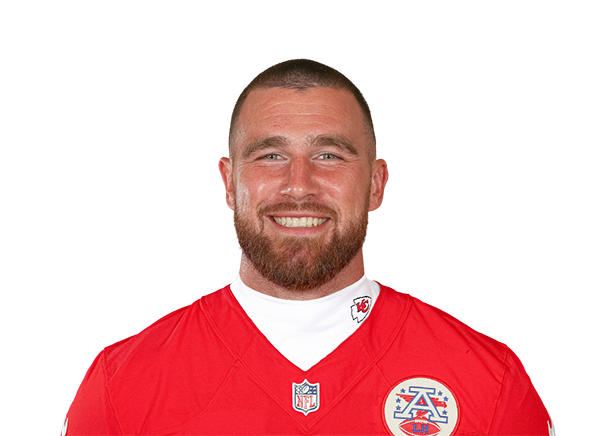The Dynasty Doctor: Ankle Sprains (High/Lateral)
This installment of Dynasty Doctor comes courtesy of Eric B, who asked about Jonathan Stewart, his ankle injuries and likelihood of being ready by training camp. This article will review both lateral and high ankle sprains, and comment specifically on how these injuries may impact the dynasty value of Stewart.
Lateral ankle sprains are the most common sprain athletes, elite or recreational, will endure. Estimates vary but 15 to 20% of all sports injuries are ankle sprains.1 Lateral ankle sprains make up 75 to 85% of all sprains, while high ankle sprains make up the rest (15-20%).2
The mechanism for a lateral ankle sprain is a combination of plantar flexion (heal raised, foot pointed down) and inversion (foot bends inward). An example is when a player jumps in the air, lands on the foot of another player, and the foot bends inward with great force. Chances are, many readers of this article who played basketball, football or soccer have experienced the pain of a lateral ankle sprain. This injury can result in significant pain, swelling and limited mobility.
There are three main lateral ankle ligaments called the anterior talofibular ligament (ATFL), calcaneofibular ligament (CFL), and posterior talofibular ligament (PTFL). The ATFL is the weakest ligament, is at its greatest tension with plantar flexion/inversion and is the most likely ligament to be torn. The CFL is the second most likely to be torn, while the PTFL is rarely torn, as it is the strongest ligament and most relaxed with plantar flexion/inversion. Here is a link to a diagram with pictures of these ligaments: http://orthodoc.aaos.org/drkehoe/Ankle%20Sprains.pdf.
The grading system for ankle sprains is not particularly useful and is a three tiered system. Grade 1 sprains are a strain but no tear, grade 2 is a partial tear and grade 3 is a complete tear of ankle ligaments. Grades 2 and 3 are the most important sprains for athletes, as they are most likely to have recurrent injuries, loss of game time and long-term instability.
Treatment for lateral ankle sprains can be surgical or non-surgical, but there is consensus opinion that surgery is not necessary in the majority of lateral ankle sprains. Immobilization for 5-7 days is recommended with a cast or boot, usage of rest, ice, compression, elevation (RICE), non-steroidal anti-inflammatory drugs (NSAIDs) like ibuprofen or aspirin, followed by functional treatment (taping or bracing, range of motion exercises), and proprioceptive training (re-learning where the ankle is in space). Healing takes place in three stages, inflammatory (6 weeks), proliferation (6 weeks to 3 months) and remodeling/maturation (3 months to 1 year). Most athletes can return to play in 1-2 weeks, although severe sprains might take 8 weeks before return to play is possible. A brace or taping may be required to help reduce risk of additional sprains or injury. Proper rehabilitation is crucial, as if not done right, weak collagen formation can increase risk of re-injury and chronic instability.3
Surgery for lateral ankle sprains is necessary in 10-20% of grade 3 sprains, and this is important as chronic instability can arise from improperly treated ankle sprains in 30-40% of patients.3 Elite athletes cannot afford to miss game time, and surgery can help athletes reduce chronic instability in the ankle joint and lower risk of recurrent ankle sprains. The problem with surgery is a higher risk of limited mobility, and this is a sacrifice in trying to reduce laxity in the ankle joint. Surgery also has complications such as infection, wound healing issues (a problem that has plagued Rob Gronkowski) and chronic stiffness/arthritis in the ankle joint. There is controversy over whether non-surgical or surgical approaches to lateral ankle sprains are recommended, and consensus is that surgery is not required for most cases. Still, athletes with chronic instability in the ankle joint or pain may opt to have surgery, or if their ankle sprain is severe enough, surgery may be done immediately. Return to play is approximately 12 weeks for most athletes after surgery for a severe lateral ankle sprain.3
A prior history of ankle sprains is a strong risk factor for recurrent ankle sprains, owing to residual instability and joint laxity from ligament damage. Surgery does help reduce risk of instability and recurrent sprains. Athletes with at least one lateral ankle sprain are twice as likely to get recurrent sprains.1 Estimates for risk of recurrent ankle sprains is reported to be as low as 4%, and as high as 20 to 30%.
High-ankle sprains are otherwise known as syndesmosis ankle sprains. Syndesmosis is a fancy way of describing bony surfaces that are connected by ligaments and form joints. The tibia, fibula and talus (top ankle bone) are connected by five ligaments, called the Interosseus Membrane (IOM), Anterior Inferior Tibiofibular Ligament (AITFL), Posterior Inferior Tibiofibular Ligament (PITFL), Transverse Tibiofibular Ligament (TTFL) and Interosseus Ligament (IOL). Together, these bony structures and ligaments constitute the syndesmosis of the ankle, and are the anatomical basis for a high-ankle sprain. These five ligaments help stabilize the medial part of the ankle joint, and along with lateral ankle ligaments, help to keep the ankle joint stable.
High ankle sprains result when the foot or lower leg are externally rotated while the foot is planted and dorsiflexed (toes are pointed up, heal pointed down). This will force the fibula to pull away from the tibia, and can result in sprained or torn ligaments. The first ligament to tear is the AITFL, as it is strained most with this movement, and is weaker than all other ligaments. Next, the IOL/IOM tears away from the tibia. It is unusual for the TTFL and PITFL to tear, and most NFL athletes do not have this severe of an injury, although it is theoretically possible. The fibula may also fracture if force is quite violent, but this is unusual for NFL athletes. The most common occurrence is when NFL players have their foot planted, and are tackled in a pile up, resulting in significant force that externally rotates their lower leg or ankle. If you want to see an example, check out Stewart’s first carry in the second half of the Carolina/Eagles game last year (November 26, 2012). Stewart gets tackled by a sea of defenders and, while his foot is not easily visible, it is clear his left foot gets hit with a lot of force in a pile up of Eagles players. A good visual for how this injury can occur is with skiers traveling down at top speeds, then get their skis stuck in a gate. The resulting force will pull their foot outward, externally rotate their lower leg, and a high ankle sprain can be the end result.
High ankle sprains are diagnosed with a combination of a clinical examination and imaging. A variety of clinical tests can be done that essentially will either check for pain at the AITFL or try to separate the tibia and fibula (Squeeze test), reproducing pain consistent with this injury. X-rays can be done that show separation of the fibula from the tibia, usually more than 6 mm. MRI scans are very good at identifying high ankle sprains, close to 100% sensitivity/specificity.
Treatment depends on whether there is separation greater than 6 mm of the fibula from the tibia, called diastasis. If there is no such separation, conservative treatment may be appropriate. This is a bit tricky, as if a high ankle sprain is more serious than initially thought, not treating it aggressively enough can result in chronic pain and instability. Surgery can be done open or with a less invasive, arthroscopic approach. Either way, surgery involves drilling screws through the fibula and into the tibia. This will allow the fibula to be brought anatomically close to the tibia, usually within 6 mm for male athletes. In doing so, ligaments can heal in a way that replicates their anatomical location, and this will ensure the most ideal healing possible for those ligaments.
Outcomes for high ankle sprains treated surgically are generally good, with nearly all athletes returning to play, and good to excellent outcomes achieved in 85 to 100% of patients.4 It can take 10-12 weeks after surgery before weight-bearing is allowed, and screws are removed 12 weeks after surgery to prevent them from breaking during rehabilitation.4 Return to play for conservatively treated high ankle sprains is approximately 2 to 8 weeks, but after surgery it can take 3 to 4 months, depending on rehabilitation, recovery and severity of injury.
Stewart’s first ankle injury occurred in his third 2012 pre-season game, and in looking at the video, the injury mechanism is consistent with a lateral ankle sprain. Stewart returned game 2 of the 2012 regular season, missed game 3 and never seemed quiet right all year. He then re-injured his right ankle on the last play of the first half in Carolina’s game against Philadelphia (November 26, 2012), and then suffered a high ankle sprain on the left ankle with his first carry of the second half. Stewart had surgery in January 2013 for a high ankle sprain, and a second surgery for his right ankle sprain, but the exact date is unclear. There has been recent speculation that he may not be ready for training camp. Stewart has been quoted expecting a full recovery. As recovery from surgery for lateral ankle sprains can take 3 months, and recovery from surgery for high ankle sprains 3 to 4 months, it makes sense that he might miss the start of training camp, given surgery for his high ankle sprain occurred January 2013. Outcomes for both surgeries are good to excellent in 85 to 100% of patients, so that is good news for Stewart’s dynasty owners. It is a bit unusual that Stewart had injuries to both ankles in the same year, and surgery for both ankles may complicate his recovery a bit. Rehabilitation is easier when one ankle is healthy, but for Stewart, that is not the case. Still, he stands a good chance of full recovery before the season starts. Notably, Stewart has a history of chronic Achilles tendinitis dating back to 2009, and surgery for a left foot injury in 2010. It seems Stewart’s feet and ankles have been a chronic pain for him and his dynasty owners.
So how should dynasty owners approach Stewart? Here are my thoughts:
- If you do not own Stewart, or are starting up a new dynasty team, keep away in big neon lights. Stewart has shown a propensity for recurrent injuries to his feet and ankles. Stewart is talented, no doubt. But given his situation, questionable coaching staff, long history of injuries and inability to be a reliable fantasy option, I will not trade for him, and I have no plans to draft him in dynasty start-ups. Making matters worse, there is a real possibility the Carolina coaching staff gets fired after 2013, and where will that leave Stewart with a new coaching staff in town? I have serious doubts that Stewart can stay healthy given his recent and past injuries, and I advise not trading or drafting him at all costs.
- If you own Stewart, as I do on two dynasty teams, I fear you are screwed. On the one hand, if you keep him, he is likely to take up a roster spot, with no consistent return on your investment. But, if you trade him, you probably won’t get much back. I offered Stewart in a dynasty league for a 2014 1st and was rejected. The owner countered with “maybe” a 2014 2nd. I offered Stewart for Alshon Jeffery straight-up, and it was declined. I have also heard on Twitter about Stewart offered for Christine Michael, and that was rejected. At this point, Stewart owners best move is to hold him, hope I’m wrong, the stars align, and a miracle occurs. If you can trade Stewart for players like Jeffery, Vincent Brown, Shane Vereen or Michael Floyd, I would hit the accept button pronto. Heck, I’d think about moving him for Keenan Allen, Ryan Broyles or even Markus Wheaton. If you can get anything substantial for Stewart, please let me know on Twitter (@scott_peak). I’d love to track his movement in dynasty leagues.
References:
- Peterson W, Rembitzki I, Koppenburg A et al. Treatment of acute ankle ligament injuries: a systematic review. Arch Orthop Trauma Surg 2013;Springerlink.com.
- Richardson DR. Sports Injuries of the Ankle. The Foot and Ankle (Canale and Beaty: Campbell’s Operative Orthopaedics 12 Ed 2012); Chapter 89: 4213-4250.
- Van den Bekerom M, Kerkhoffs G, McCollum G et al. Management of acute lateral ankle ligament injury in the athlete. Knee Surg Sports Tramatol Arthrosc 2013;21:1390-1395.
- Mak M, Gartner L and Pearce C. Management of Syndesmosis Injuries in the Elite Athlete. Foot Ankle Clin N Am 2013;18:195-214.
- Dynasty Capsule: Carolina Panthers - February 3, 2017
- The Dynasty Doctor: CJ Anderson - January 25, 2017
- The Dynasty Doctor: Week 15 - December 20, 2016






